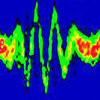| Sep 02, 2022 |
|
(Nanowerk News) A team of DESY scientists has succeeded for the first time in measuring so-called phase noise with 500 times greater precision than has been technically achievable in this frequency range before (IEEE Transactions on Instrumentation and Measurement, “Phase Noise Measurements for L-Band Applications at Attosecond Resolution”). This will enable future breakthroughs for medicine, telecommunications and accelerator technology.
|
|
The design of the prototype, whose accuracy approaches a physical limit, could serve as the basis for developing better measuring instruments.
|
|
The world today would be unthinkable without high-frequency technology: whether speaking on a mobile phone, navigating in a car, scanning your surroundings with a radar in an aeroplane or on a ship, or the everyday use of a computer – everywhere, high-frequency oscillations, with short wavelengths, ensure that information is transmitted from one place to another and processed. And the density of the transmitted information keeps on growing.
|
|
As the information density increases, so too does an inherent problem: The system responds more and more sensitively to disturbances, meaning that the transmission becomes more and more susceptible to interference. If the interference is too great, the flow of information can become unreliable or break down altogether. The biggest source of interference in high-frequency technology is noise – “impurities” in the oscillations caused by electronic components, for example.
|
|
The high-frequency oscillations used in particle accelerators, such as that driving the X-ray laser European XFEL, also need to include as little noise as possible. The goal is to make the acceleration of the particles in the X-ray laser as efficient and reproducible as possible.
|
|
A team from the DESY Accelerator Beam Controls group (MSK) has now succeeded in designing a prototype detector in the laboratory that is capable of measuring the electromagnetic field of the TESLA-type superconducting cavities with an unparalleled time resolution of 10 attoseconds (10 attoseconds = 0.000 000 000 000 000 01 seconds), thereby measuring the noise in the fundamental frequency more than 500 times more precisely than has hitherto been possible.
|
|
“Along with numerous other subsystems, the resolution of these ‘noise detectors’ determines the temporal accuracy of the entire accelerator and thus ultimately the accuracy that can be achieved by the experiments conducted at these facilities,” explains Frank Ludwig from the MSK group. “In the early stages, the first free-electron lasers at DESY (TTF facility) around the year 2000 had a resolution in the 100 femtosecond range. Over the following decade, resolutions and stabilities in the lower 10 femtosecond range were achieved in the FLASH and European XFEL machines.”
|
|
The MSK team was the first to use the carrier suppression interferometer technique for accelerator applications: in this method, the actual fundamental signal of the oscillation is suppressed, thereby increasing the accuracy with which its fluctuations can be measured. High-frequency engineer Louise Springer, who developed the detector as part of her doctorate, says: “It really is quite unusual to work without the actual high-frequency oscillation that one is characterising, because all conventional devices in modern communications technology cannot work without this carrier signal. But the method has the potential to improve the time resolution of accelerators to well below one femtosecond in the future.”
|
|
“A number of challenges still have to be overcome before the laboratory prototype can be integrated as part of the complex structure of accelerators,” adds Holger Schlarb, head of the MSK group. The first such measurements are being planned at the test accelerator Cryo Module Test Bench (CMTB). “However, improved phase noise analysers for measuring high-frequency components are a very tangible goal as a key technology for, among other things, the ever-increasing information density in data transmission. They will permit decisive improvements in active and passive high-frequency components for the commercial market as well as future accelerators,” says Schlarb.
|
|
“This amazing success in improving our techniques for accelerators leads to innovations that can impact many other technologies,” says Wim Leemans, Director of the Accelerator Division.
|
|
The group is planning to continue to develop its field detector in cooperation with an industrial partner so as to improve these electronic components, which are used not only in science but also in industry, telecommunications, radar and space exploration.
|

